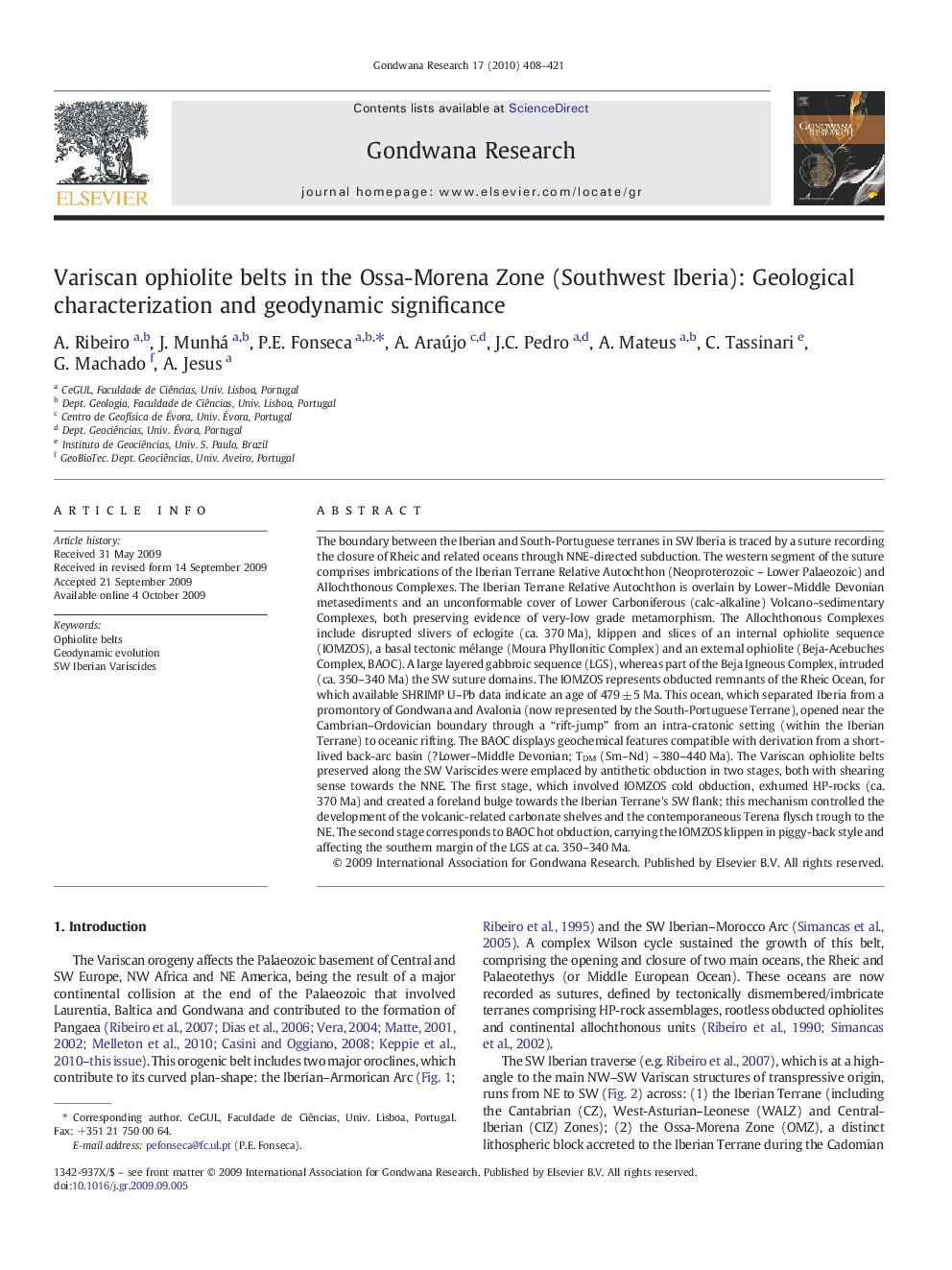| کد مقاله | کد نشریه | سال انتشار | مقاله انگلیسی | نسخه تمام متن |
|---|---|---|---|---|
| 4727241 | 1640149 | 2010 | 14 صفحه PDF | دانلود رایگان |

The boundary between the Iberian and South-Portuguese terranes in SW Iberia is traced by a suture recording the closure of Rheic and related oceans through NNE-directed subduction. The western segment of the suture comprises imbrications of the Iberian Terrane Relative Autochthon (Neoproterozoic – Lower Palaeozoic) and Allochthonous Complexes. The Iberian Terrane Relative Autochthon is overlain by Lower–Middle Devonian metasediments and an unconformable cover of Lower Carboniferous (calc-alkaline) Volcano–sedimentary Complexes, both preserving evidence of very-low grade metamorphism. The Allochthonous Complexes include disrupted slivers of eclogite (ca. 370 Ma), klippen and slices of an internal ophiolite sequence (IOMZOS), a basal tectonic mélange (Moura Phyllonitic Complex) and an external ophiolite (Beja-Acebuches Complex, BAOC). A large layered gabbroic sequence (LGS), whereas part of the Beja Igneous Complex, intruded (ca. 350–340 Ma) the SW suture domains. The IOMZOS represents obducted remnants of the Rheic Ocean, for which available SHRIMP U–Pb data indicate an age of 479 ± 5 Ma. This ocean, which separated Iberia from a promontory of Gondwana and Avalonia (now represented by the South-Portuguese Terrane), opened near the Cambrian–Ordovician boundary through a “rift-jump” from an intra-cratonic setting (within the Iberian Terrane) to oceanic rifting. The BAOC displays geochemical features compatible with derivation from a short-lived back-arc basin (?Lower–Middle Devonian; TDM (Sm–Nd) ~ 380–440 Ma). The Variscan ophiolite belts preserved along the SW Variscides were emplaced by antithetic obduction in two stages, both with shearing sense towards the NNE. The first stage, which involved IOMZOS cold obduction, exhumed HP-rocks (ca. 370 Ma) and created a foreland bulge towards the Iberian Terrane's SW flank; this mechanism controlled the development of the volcanic-related carbonate shelves and the contemporaneous Terena flysch trough to the NE. The second stage corresponds to BAOC hot obduction, carrying the IOMZOS klippen in piggy-back style and affecting the southern margin of the LGS at ca. 350–340 Ma.
Journal: Gondwana Research - Volume 17, Issues 2–3, March 2010, Pages 408–421